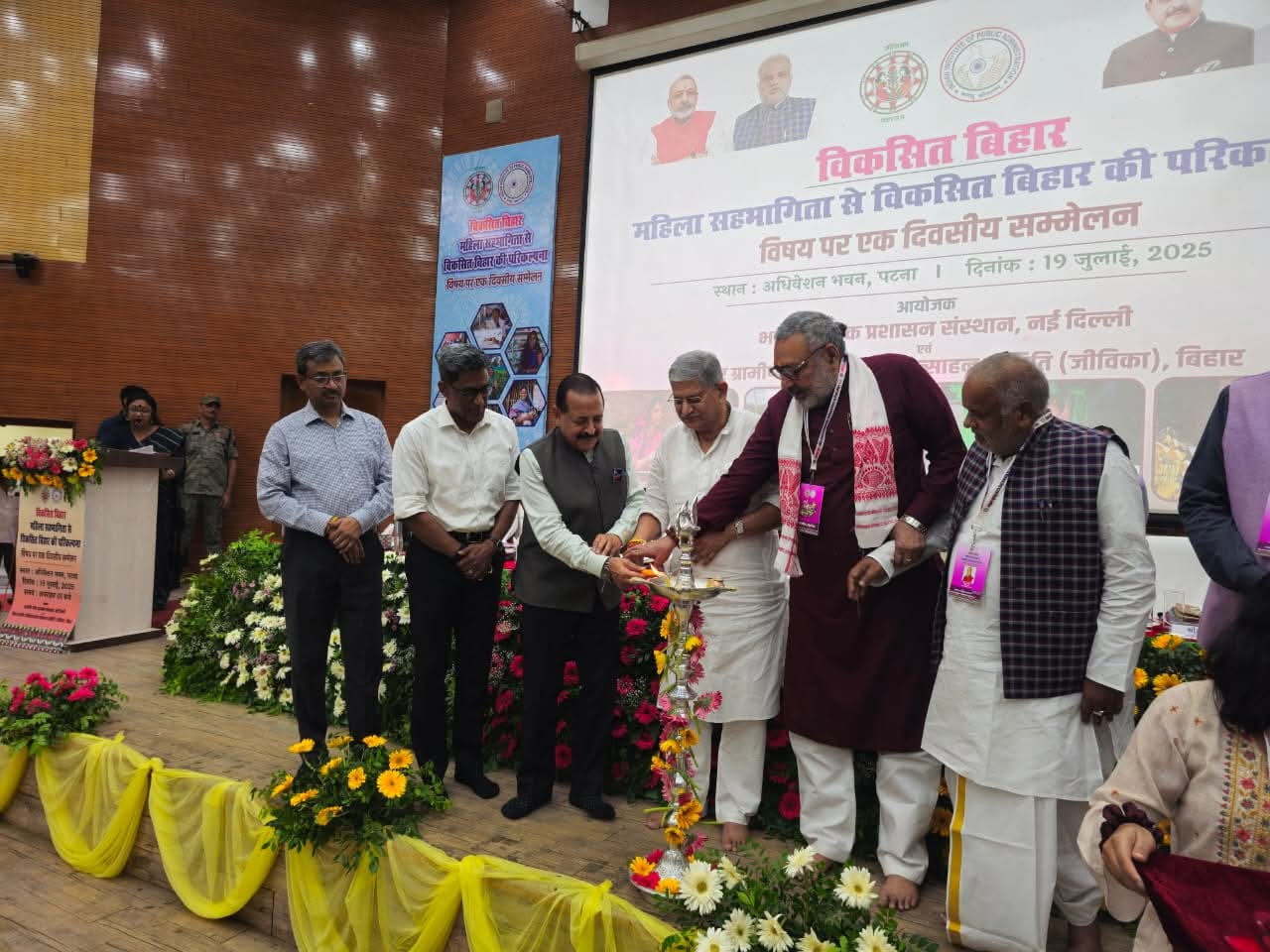BEYOND BANS: Why Bihar’s Liquor Law Needs Reform and Sustained Focus—Not Just Raids
On July 19, 2025, former JD(U) national president and current Union Minister Lalan Singh stood on stage in Patna and delivered what was both a defense and a declaration: Bihar’s liquor ban, he said, was born of women’s request and would not be undone. The timing of the speech--months ahead of state elections--was politics with a moral edge.
Launched in 2016 under Chief Minister Nitish Kumar, the liquor ban, or Sarabbandhi, was framed as a social revolution. It aimed to curb domestic violence, reduce alcohol-related crimes, and empower women.
 |
| Image Source: Mopr_Goi |
Singh recounted how women from the Jivika self-help programme urged the Bihar chief minister Nitish Babu to ban alcohol. And indeed, for many women in rural Bihar, the ban brought real relief—fewer late-night fights, less alcohol-fueled spending, and a safer environment after dark, as Union Minister Singh rightly recounted in Patna.
But nearly a decade on, the ground reality is more complicated. According to official figures, over 8.4 lakh prohibition-related cases have been filed since the ban came into effect. More than 12 lakh people have been arrested.
And yet, illegal liquor flows somehow—from rooftops, across state borders, and through back alleys. In dry Bihar, booze has simply gone underground.
That’s where the policy hits a moral and logistical wall.
While Singh passionately stated the government’s intention to uphold the ban, public sentiment is fractured. On social media, reactions to his speech ranged from praise for standing by women’s safety to scathing criticism about how the law has become a breeding ground for corruption, extortion, and selective targeting of the poor.
And the data backs this. The overwhelming majority of those arrested are daily wage workers, labourers, or rickshaw pullers—men who drink to escape hardship, not because they belong to some alcohol mafia.
The collateral damage has been enormous. When a poor or deprived man is arrested for drinking—often with no access to a lawyer or financial resources—the ripple effects hit his entire household.
A child’s school fee might go unpaid. A sick parent may miss medical treatment. A family may lose its sole breadwinner over a bottle of desi tharra. A law designed to liberate women somehow also risks trapping their families in new forms of poverty.
And yet, the actual perpetrators—the illicit manufacturers and bootleg networks—remain elusive. This enforcement, morally grounded as it is, is also inefficient and unjust when viewed from a different lens.
So what’s the way forward?
First, there must be a policy shift from mere punishment to prevention. Instead of defaulting to direct arrests, the government should invest heavily in correctional homes and community-based deaddiction centers (nasha mukti kendras).
These institutions can provide medical care, therapy, and vocational support and help individuals leave behind addiction, not just hide from it. Because hiding is temporary, character reform through self improvement goes a far longer way.
Second, enforcement needs surgical precision. Catch the kingpins, not just the pawns. The real crackdown must target those who produce, store, and distribute illegal liquor—not only the man nursing a glass in a slum corner. Smuggling rackets need dismantling, not dramatised police parades of poor men.
Third, accountability must go both ways. If bridges collapse, we question engineers. If roofs cave in, we question contractors. Then when liquor flows, shouldn’t we also question the systemic failures of enforcement and governance and policing?
And finally, it’s time to reframe prohibition as a public health challenge. That means involving public health experts, economists, women’s groups, and civil society in rethinking how to protect communities without criminalising them.
The Bihar liquor ban started with good intentions, and in most areas, it has worked well. The national media may lack the wherewithal to see through the depth of this policy but everybody who has grown up in Bihar knows just how impactful it has been in, most importantly, women empowerment. But moral purity doesn’t build sustainable policy alone. Compassion, clarity, and course corrections surely do.
शराबबंदी - एक साहसिक कदम 😊#NitishKumar #Bihar #NitishModel pic.twitter.com/LvelAzFkgp
— Nikhil Mandal (@nikhilmandalJDU) July 19, 2025
A dry state shouldn’t mean dry logic. It should mean a bold, balanced approach that heals and tries its best not to harm.
The vision behind Bihar’s liquor ban cannot be viewed in isolation from the broader socio-economic empowerment agenda that the state continues to promote. Union Minister Lalan Singh’s reaffirmation of the prohibition policy came during a crucial conference in Patna titled Viksit Bihar: Mahila Sahbhagita se Viksit Bharat ki Kalpana.
Highlighting women’s role in shaping resilient and inclusive panchayats, Singh underscored that empowered women are the cornerstone of sustainable governance and community development. His remarks positioned women's leadership as a symbolic gesture that is also a transformative force linking grassroots participation to national progress.
Organised jointly by the Indian Institute of Public Administration (IIPA) and Bihar’s JEEViKA program, the conference brought together thousands of women associated with self-help groups from across the state.
Their presence further cemented the foundational logic of the liquor ban, as a demand that arose from the lived realities of women in Bihar’s villages. The dual narrative emerging from the day, prohibition as both a protective measure and an enabler of women’s agency, suggests that the path forward must integrate justice, dignity, and social rehabilitation.
A reformed prohibition policy must now evolve to serve as a framework for inclusive development that uplifts the very citizens the state seeks to protect.
The event had commenced with the ceremonial lighting of the lamp in the presence of several distinguished dignitaries, including Union Minister of Textiles Giriraj Singh, Union Minister of State (Independent Charge) Dr. Jitendra Singh, Bihar's Minister for Rural Development Shravan Kumar, and other eminent guests.
Their collective presence lent weight to the discussions on women-led development along with reinforcing both the state and central government’s commitment to empowering rural communities through coordinated policy, participation, and inclusive governance.
